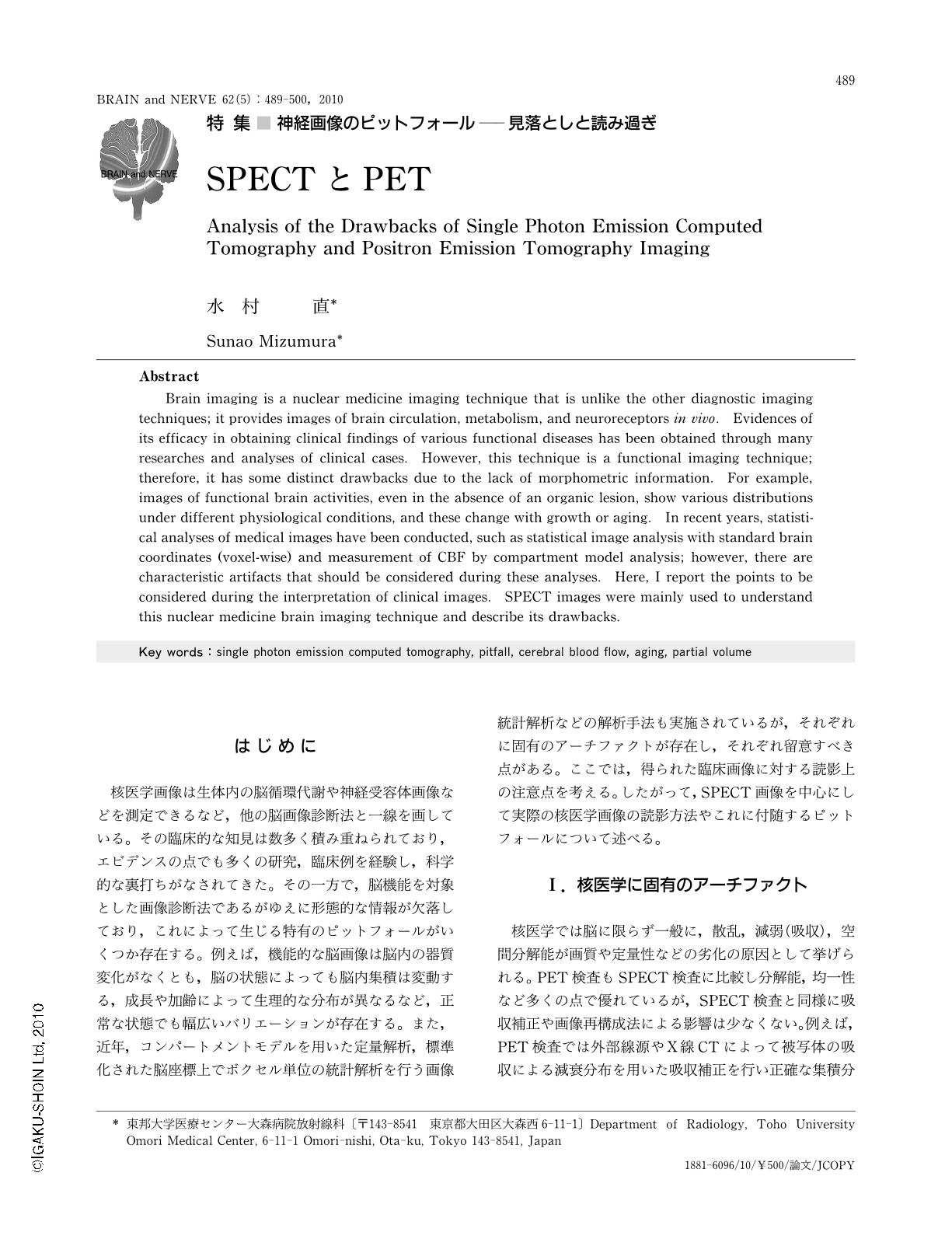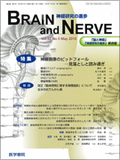Japanese
English
- 有料閲覧
- Abstract 文献概要
- 1ページ目 Look Inside
- 参考文献 Reference
はじめに
核医学画像は生体内の脳循環代謝や神経受容体画像などを測定できるなど,他の脳画像診断法と一線を画している。その臨床的な知見は数多く積み重ねられており,エビデンスの点でも多くの研究,臨床例を経験し,科学的な裏打ちがなされてきた。その一方で,脳機能を対象とした画像診断法であるがゆえに形態的な情報が欠落しており,これによって生じる特有のピットフォールがいくつか存在する。例えば,機能的な脳画像は脳内の器質変化がなくとも,脳の状態によっても脳内集積は変動する,成長や加齢によって生理的な分布が異なるなど,正常な状態でも幅広いバリエーションが存在する。また,近年,コンパートメントモデルを用いた定量解析,標準化された脳座標上でボクセル単位の統計解析を行う画像統計解析などの解析手法も実施されているが,それぞれに固有のアーチファクトが存在し,それぞれ留意すべき点がある。ここでは,得られた臨床画像に対する読影上の注意点を考える。したがって,SPECT画像を中心にして実際の核医学画像の読影方法やこれに付随するピットフォールについて述べる。
Abstract
Brain imaging is a nuclear medicine imaging technique that is unlike the other diagnostic imaging techniques; it provides images of brain circulation,metabolism,and neuroreceptors in vivo. Evidences of its efficacy in obtaining clinical findings of various functional diseases has been obtained through many researches and analyses of clinical cases. However,this technique is a functional imaging technique; therefore,it has some distinct drawbacks due to the lack of morphometric information. For example,images of functional brain activities,even in the absence of an organic lesion,show various distributions under different physiological conditions,and these change with growth or aging. In recent years,statistical analyses of medical images have been conducted,such as statistical image analysis with standard brain coordinates (voxel-wise) and measurement of CBF by compartment model analysis; however,there are characteristic artifacts that should be considered during these analyses. Here,I report the points to be considered during the interpretation of clinical images. SPECT images were mainly used to understand this nuclear medicine brain imaging technique and describe its drawbacks.

Copyright © 2010, Igaku-Shoin Ltd. All rights reserved.


